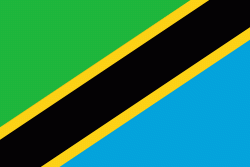Mbulu District (Mbulu)
Mbulu District is one of the six districts of the Manyara Region of Tanzania. It is bordered to the north by the Arusha Region and Lake Eyasi, to the east by the Babati Rural District, to the south by the Hanang District, and to the west by the Singida Region.
According to the 2002 Tanzania National Census, Mbulu District had a population of 237,882 inhabitants. According to the 2012 Tanzania National Census, the population of Mbulu District was 320,279.
The District Commissioner is Chelestino Mofugo. Mbulu District is, since the 2015 general election, divided into two election counties: Mbulu Mjini and Mbulu Vijijini.
The 2015-2020 members of parliaments are Zacharias Isaay (CCM) and Flatei Massay (CCM), for Mbulu Mjini and Mbulu Vijijini respectively.
The District is inhabited by people of different ethnic affiliations, especially the Iraqw people who are some of the earliest agro-pastoralists to migrate to what is now the Republic of Tanzania. Other native tribes are the Wahatzabeti living in Yaeda Chini, living a primitive life, and the Datooga people living in Mbulu Vijijini. People engage mainly in agriculture, keeping livestock and farming activities. There is plantation of onions in Bashay and wheat in many places.
The Mbulu District is located in the Mbulu Highlands, with forested mountains like Mount Guwang which are attractive to tourists. There's also a hot spring in Hhaynu. Lake Manyara National Park is partly in Mbulu District where tourists can come and visit. The Sanu Park Inn Lodge in Mbulu town provides accommodations for visitors.
Mbulu town has the Nyerere Stadium in Sanu Mbulu, the biggest stadium in whole Manyara Region for football and marathon. One of biggest hospitals in northern Tanzania is found in Mbulu: the Haydom Lutheran Hospital.
As of 2012, Mbulu District was administratively divided into 32 wards.
According to the 2002 Tanzania National Census, Mbulu District had a population of 237,882 inhabitants. According to the 2012 Tanzania National Census, the population of Mbulu District was 320,279.
The District Commissioner is Chelestino Mofugo. Mbulu District is, since the 2015 general election, divided into two election counties: Mbulu Mjini and Mbulu Vijijini.
The 2015-2020 members of parliaments are Zacharias Isaay (CCM) and Flatei Massay (CCM), for Mbulu Mjini and Mbulu Vijijini respectively.
The District is inhabited by people of different ethnic affiliations, especially the Iraqw people who are some of the earliest agro-pastoralists to migrate to what is now the Republic of Tanzania. Other native tribes are the Wahatzabeti living in Yaeda Chini, living a primitive life, and the Datooga people living in Mbulu Vijijini. People engage mainly in agriculture, keeping livestock and farming activities. There is plantation of onions in Bashay and wheat in many places.
The Mbulu District is located in the Mbulu Highlands, with forested mountains like Mount Guwang which are attractive to tourists. There's also a hot spring in Hhaynu. Lake Manyara National Park is partly in Mbulu District where tourists can come and visit. The Sanu Park Inn Lodge in Mbulu town provides accommodations for visitors.
Mbulu town has the Nyerere Stadium in Sanu Mbulu, the biggest stadium in whole Manyara Region for football and marathon. One of biggest hospitals in northern Tanzania is found in Mbulu: the Haydom Lutheran Hospital.
As of 2012, Mbulu District was administratively divided into 32 wards.
Map - Mbulu District (Mbulu)
Map
Country - Tanzania
 |
 |
| Flag of Tanzania | |
Many important hominid fossils have been found in Tanzania, such as 6-million-year-old Pliocene hominid fossils. The genus Australopithecus ranged across Africa between 4 and 2 million years ago, and the oldest remains of the genus Homo are found near Lake Olduvai. Following the rise of Homo erectus 1.8 million years ago, humanity spread all over the Old World, and later in the New World and Australia under the species Homo sapiens. H. sapiens also overtook Africa and absorbed the older species of humanity. Later in the Stone and Bronze Age, prehistoric migrations into Tanzania included Southern Cushitic speakers who moved south from present-day Ethiopia; Eastern Cushitic people who moved into Tanzania from north of Lake Turkana about 2,000 and 4,000 years ago; and the Southern Nilotes, including the Datoog, who originated from the present-day South Sudan–Ethiopia border region between 2,900 and 2,400 years ago. These movements took place at about the same time as the settlement of the Mashariki Bantu from West Africa in the Lake Victoria and Lake Tanganyika areas. They subsequently migrated across the rest of Tanzania between 2,300 and 1,700 years ago.
Currency / Language
| ISO | Currency | Symbol | Significant figures |
|---|---|---|---|
| TZS | Tanzanian shilling | Sh | 2 |
| ISO | Language |
|---|---|
| AR | Arabic language |
| EN | English language |















